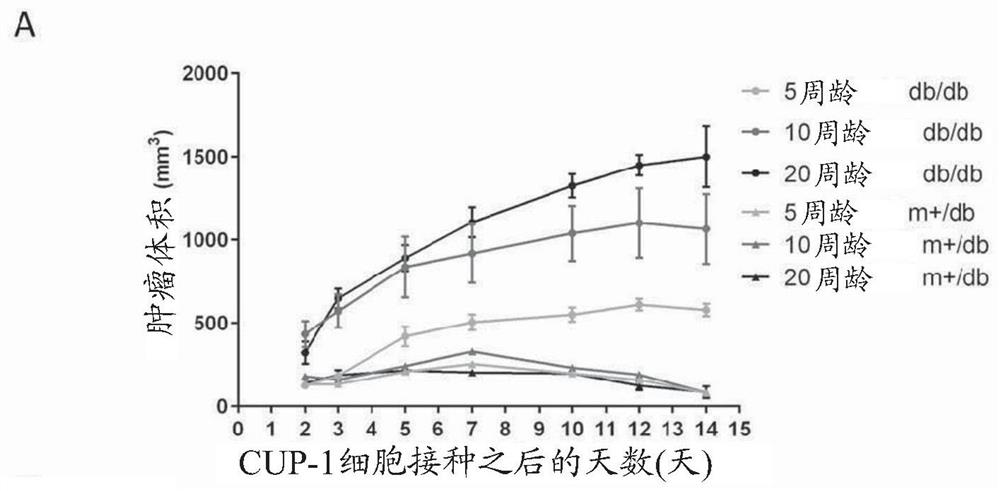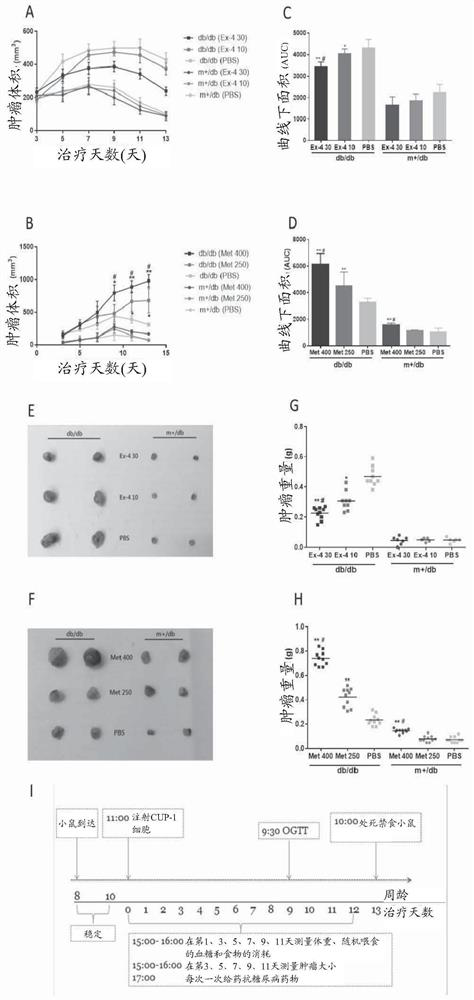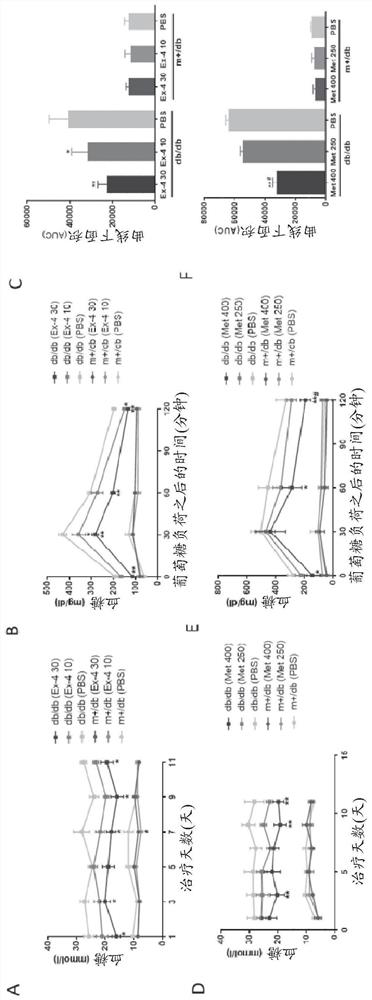The use of glp-1 receptor agonist drugs
The technology of a receptor agonist and its application is applied in the field of preparing medicines for increasing the immunity of patients, and can solve the problems of destroying the immune function of patients, inconsistent conclusions of anti-cancer effects, and increasing the proliferation of cancer cells.
- Summary
- Abstract
- Description
- Claims
- Application Information
AI Technical Summary
Problems solved by technology
Method used
Image
Examples
Embodiment 1
[0114] Example 1, Tumorogenicity of CUP-1 Tumor Cell Line in Diabetic Mice
[0115] In order to study the effect of diabetes on HPV16E7-mediated tumorigenesis, HPV-positive cancer cell line (Cup-1) was subcutaneously injected into the neck region of db / db diabetic mice and db / m+ control mice as described above. Similar to the reaction of nude mice, tumor protrusions visible to the naked eye can appear after 3 days. Interestingly, the growth curves of the cancer cell lines in diabetic and control mice were significantly different. Tumor volume in diabetic mice increased six-fold between days 3 and 7 after cancer cell inoculation. Correspondingly, the tumor volume in non-diabetic control mice only expanded by 1.5 times and began to shrink by the seventh day. On day 29, the Cup-1 tumors in the control mice were completely cleared. On day 14, the tumor volume of db / db mice was almost 4 times that of control mice (1256.9±31.4vs 314.4±22.1mm 3 , Pfigure 1 and Table 1 below.
[...
Embodiment 2
[0120] Example 2, Exenatide-4 inhibits tumor growth, while metformin induces tumor growth
[0121] 1) Exenatide-4-induced tumor regression
[0122] according to figure 2 The treatment scheme shown in I, 10-week-old db / db mice bearing CUP-1 tumors, were treated with different doses of exenatide-4. While subcutaneously injecting tumor cells into male diabetic mice and control mice, different concentrations of Exenatide-4 (10 or 30 nM / kg body weight, respectively) or PBS control were subcutaneously injected for 13 days. Such as figure 2 As shown in A, we subcutaneously injected different doses of exenatide-4 into 10-week-old db / db diabetic tumor-bearing mice. After the 13-day administration period, the mice were sacrificed and the tumors were carefully excised and weighed. Store in a deep freezer for subsequent experiments. The area under the curve of tumor volume in diabetic tumor-bearing mice was used as an index.
[0123] In db / db mice, exenatide-4 showed a dose-depende...
Embodiment 3
[0129] Embodiment 3, exenatide-4 and metformin all alleviate hyperglycemia in db / db mice
[0130] The blood glucose levels of the animals in each group in Example 2 above were further measured. Compared with the experimental group treated with PBS, daily administration of 10nM / kg or 30nM / kg exenatide-4 reduced the blood glucose level of db / db mice in a dose-dependent manner ( image 3 A), the dose of 30nM / kg significantly reduced the blood glucose level of db / db mice. Based on the results of an oral glucose tolerance test (OGTT) performed on day 9, the exenatide-4-treated db / db group lowered blood glucose levels below that of the PBS-treated db / db group. Exenatide-4 treatment reduced blood glucose (BG) concentrations at all time points (0, 30, 60 and 120 min) compared to the PBS-treated experimental group (40407.8±9390.8) ( image 3 B and image 3 C), wherein the experimental group treated with 30nM / kg exenatide-4 had the smallest AUC of BG (22268.0±4751.8), followed by the...
PUM
 Login to View More
Login to View More Abstract
Description
Claims
Application Information
 Login to View More
Login to View More - R&D
- Intellectual Property
- Life Sciences
- Materials
- Tech Scout
- Unparalleled Data Quality
- Higher Quality Content
- 60% Fewer Hallucinations
Browse by: Latest US Patents, China's latest patents, Technical Efficacy Thesaurus, Application Domain, Technology Topic, Popular Technical Reports.
© 2025 PatSnap. All rights reserved.Legal|Privacy policy|Modern Slavery Act Transparency Statement|Sitemap|About US| Contact US: help@patsnap.com



